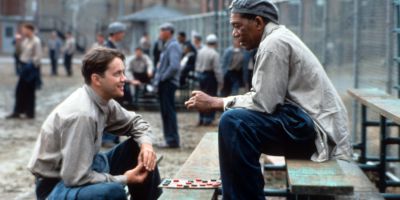
 Is prison really like the movies? 5 jail myths busted
Is prison really like the movies? 5 jail myths busted
Other | Thursday 11th December 2014 | Ben
Think of prisons in the movies and what comes to mind? Brutal beatings. Violent gang assaults. Solitary confinement for hours, maybe days. Disgusting food not suitable for dogs.
The reasoning of prisons is threefold; punishment, keeping dangerous people off the streets, and/or rehabilitation. And yet it seems that the latter of the three is somewhat negated in the movie world of prisons, perhaps because watching prisoners attend computing courses or reading novels does not make for a great cinematic experience.
Not all prisons such as those you would find in Jail Exchange are brutal sweatshops where a person must stare over their shoulders. Here are five jail myths busted:
Solitary confinement is a rarity
In the Shawshank Redemption Andy Dufresne suffers weeks of brutal solitude, with the added trauma of total darkness. But this contrasts with the rest of the movie where Dufresne is given a free rein to interact with other prisoners, setting up an advanced library.
More than 80,000 US prisoners spend hours, days or lifetimes in 7x9ft of solitary confinement, a damning indictment of the legal system in a supposedly democratic country. It appears the US Justice system is at least recognising the issue and a series of hearings are in process to oppose the harsh treatment.
But in reality the series Orange is the New Black – where the lead character is nearly destroyed by her world of solitude - is closer to the truth than most movies you’ll see.
Only evil people lurk behind bars
Of course they do, and a list of movies depicting a wolf-pack of lawless, hopeless reprobates hell-bent on inflicting pain with no moral code would fill a piece on its own. But the sad fact is that in reality the vast majority of prisoners across the world suffer from mental illness, or have been left with no option other than to steal to feed themselves – or are just not intelligent enough to cope in the 21st century.
US prisons are home to 10 times more mentally ill people than psychiatric hospitals – 356,000, compared to 35,000. In 44 of 50 states a prison holds more mentally ill patients than the largest hospital. The National Alliance on Mental Illness in America is trying to give more powers to state courts to divert nonviolent offenders to hospital rather than prison, according to Al-Jazeera.
Only physically strong people exist behind bars
In our mind prison is full of muscle-bound men, imprisoned for beating wives or other guys in pub brawls or for overpowering a guard at a bank. Films such as the Green Mile and the gigantic John Coffey reinforce the stereotype.
It isn’t true. Prisoners are sometimes ruined by time away from friends and family. Many are seriously ill and have brought in diseases such HIV-Aids, hepatitis, various infections or other illnesses. Inactivity, and a lack of sunlight and the food they want has taken its toll. They are often broken, shrunken people - and of course suicide is a major issue in every prison system in the world.
We don’t know what goes on in prisons
In virtually every prison movie there is at least one beating – some particularly horrific, such as the 1980s classic Scum - and unnecessary treatment surely still exists behind closed doors in prisons.
But in the 21st century not only are transgressions and violations reported locally, but also globally. In Afghanistan, China, parts of South America and other nations the lack of human rights are now reported, and spread digitally. Blogs, Buzzfeed lists, videos and photojournalism projects now ensure that at least some prison transgressions than would once have been hidden are now reported to the world.
Women go to prison as well
It’s a broader discussion, but when was the last time you saw a movie about a women’s prison? It may surprise you to know that more than 1 million women in America are incarcerated, or in somewhere inside the US justice system.
And yet unearthing a modern, decent women’s prison movie proved impossible – here’s a list by Bust in which the most recent movie was made in the 1980s. A gap in the market, perhaps?
